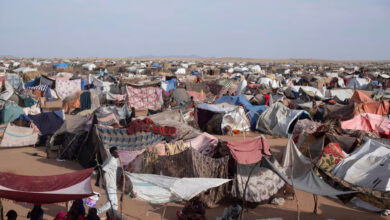
A 3,400-year-old tomb holding the remains of more than a dozen possibly mummified people has been discovered on Sai Island, along the Nile River in northern Sudan.
The Across Borders research project told Live Science that the tomb on Sai Island, 200km from Egypt’s southern border with Sudan, dates back to Egypt’s New Kingdom. The tomb was first discovered in 2015, but the team was only able to start excavating the site this year, Across Borders reported on Wednesday.
The island is part of Nubia that Egypt controlled 3,400 years ago. The Egyptians built settlements and fortifications throughout Nubia, including on Sai Island, which had a settlement and a gold mine. The tomb, which contains multiple chambers, appears to hold the remains of Egyptians who lived in or near that settlement and worked in gold production, Live Science said.
The German research team said that the tomb contained the remains of over one dozen individuals, several of whom were mummified, and wooden coffins although their burial sites were not well preserved.
The artifacts found in the tomb include scarabs, ceramic vessels, a gold ring, the remains of gold funerary masks worn by the deceased and a small stone sculpture known as a shabti. Some of the artifacts bore Egyptian hieroglyphic inscriptions that revealed the tomb was originally created for a man named Khnummose, who was a “master gold worker.”
Further studies and tests are being conducted on the mummified remains in hopes of better understanding the lives and working conditions of the workers on the island, Julia Budka, professor of Egyptian archaeology and art history at Ludwig-Maximilians University in Munich and the excavation’s chief archaeologist said.
According to Across Borders, Egyptians built settlements and fortifications in the historic region known as Nubia, including Sai island where they constructed an outpost and a gold mine.
“The remains of Khnummose (which may have been mummified) were found next to those of a woman who may have been his wife. Some of the other people found in tomb may have been relatives of Khnummose,” the researchers said, adding that they planned to conduct DNA analyses of the remains.
It’s uncertain exactly how many of the people were buried in coffins, Budka added.




